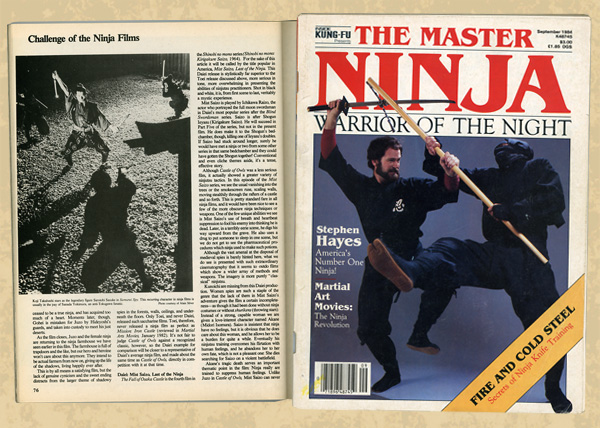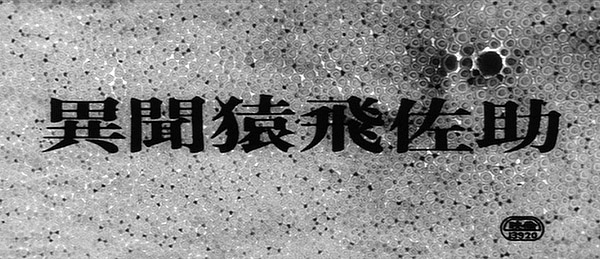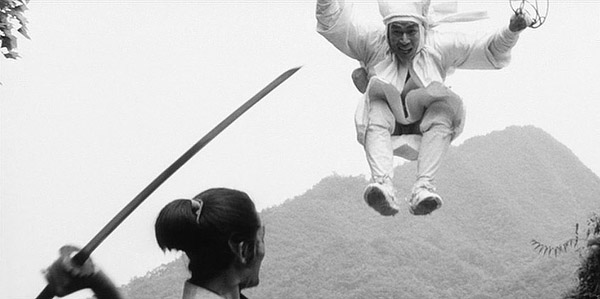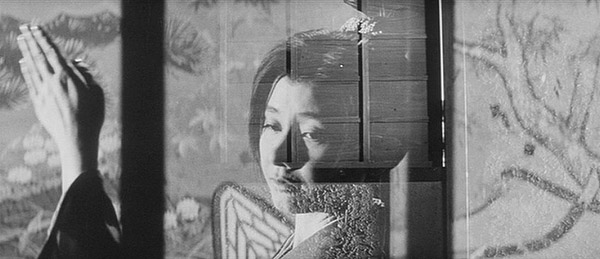It was the Summer of 1984, the height and heat of the American craze. Revenge of the Ninja was running on HBO, Ninja III: The Domination was about to hit theaters, Spanish-dubbed episodes of Lone Wolf and Cub ran on late-night Galavision. We thought we were sated.
Then, this little gem hit newsstands:

I bought the very copy pictured here of Inside Kung-Fu‘s special issue The Master Ninja: Warrior of the Night because like all shinobi-obsessed teens at the time, you bought ANYTHING ninja-related, and magazines by the ream. This one had more than the usual Hayes techniques and weapons fetish, though, it had four articles on film. The one that just KILLED us was “Challenge of the Ninja Films.”
Six pages of myths made real – like photo proof of the Loch Ness Monster to a cryptozoologist – we stared dumbfounded at actual evidence of Japanese ninja films. GOOD ninja films, serious, artistically superior, historically credible ninja films. Ninja films we had no chance of seeing. It was wondrous and torturous at the same time. Shinobi-no-Mono? Watari? What were these fantastic alien entities whose very notion was as baffling as the monolith was to the monkey-men of 2001: A Space Odyssey?!?!?
OK, I gotta reign myself in here…
The short of it: 15-year old Keith was rather tormented by the fact that a Samurai Spy was out there, and the U.N. wasn’t passing a global resolution to put it in his hands immediately. That’s why decades later, 36-year old Keith was all over the Criterion DVD release of said Samurai Spy like a fly on shit. FINALLY!


So now, four and a half years after the 2005 Masahiro Shinoda retrospecticve box set raised the ceiling for me on how artistically adventurous a ninja movie could be, I’m delighted to actually express some editorial adoration. The 1965 redefining of the often visited Sarutobi Sasuke character is a film that while certainly released in the fervor of the 60’s Japanese craze, was on a level above much of its competition. Maybe too far above for some.
Ibun Sarutobi Sasuke is not an easy film to process. Brilliant to some, failure to others. Most ninja fans see it on the highest end of the shinobi scale, while many chambara or general Japanese cinemaphiles see it on the lower end of the Shinoda/samurai scale.

Me, after all these years, I was probably going to love SS no matter what. But repeated viewings over the last four years have cemented it as a personal fave, mainly for it’s visual quality. It is with a little intimidation that I now present some of those qualities. This is an important film to me, with a long history, so I wanted VN’s exploration of it to be something special.
Thus, I’ll approach this a lot differently than other articles here. I’m going to break down Shinoda’s striking visuals into four categories apparent throughout the film;
– Geometry and Lines in Composition
– Use of Shadow (and Light) to Obscure Characters
– Theatrical Combat Posing
– Dramatic Use of Quick Close-Ups
Samurai Spy is a much-reviewed film, but I haven’t seen anyone really break-down its visual language. I hope I do it justice.



Part 1 of 4 starts tomorrow. In the meantime:
Buy the superb Criterion DVD from Amazon.
Read an erudite chihuahua’s review of both this film and other versions of Sasuke at a sight we often recommend, The Weird Wild Realm, which in a neato piece of universal convergence, is supervised by none other than the writer of that very same 1984 article!


